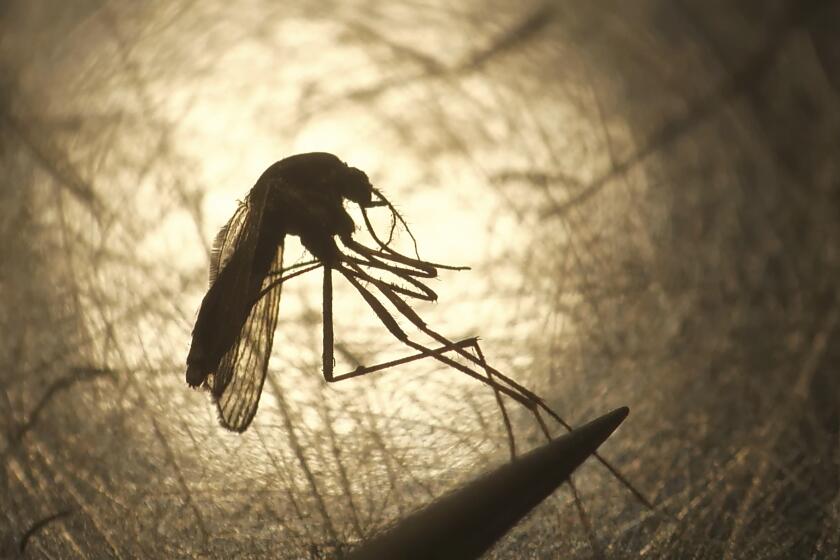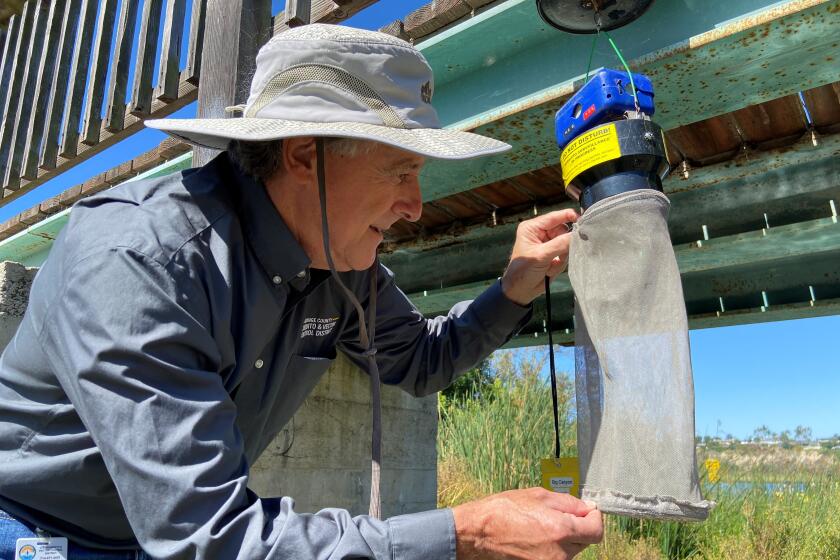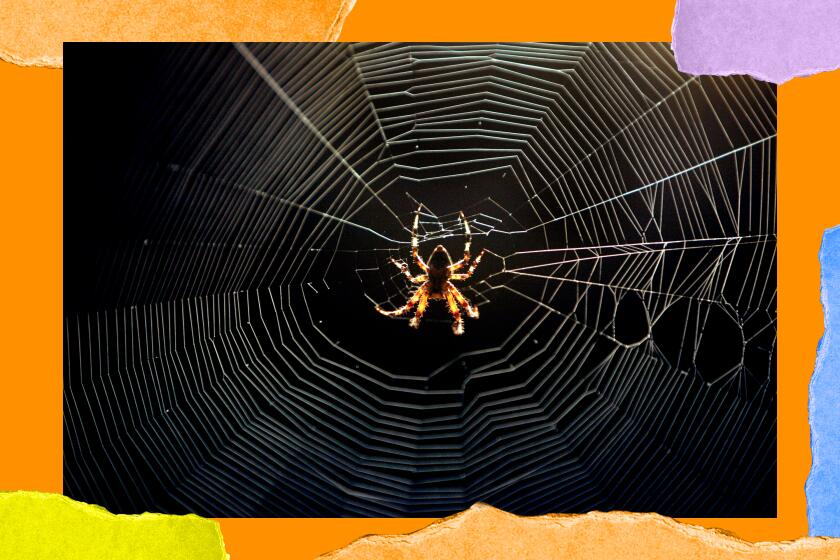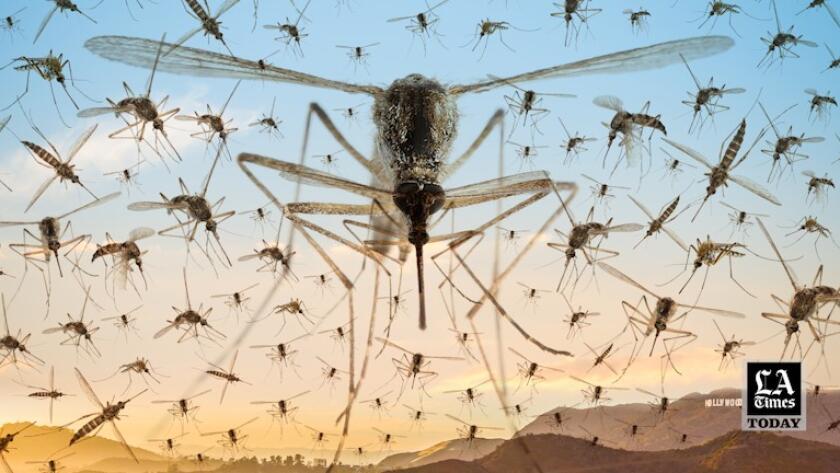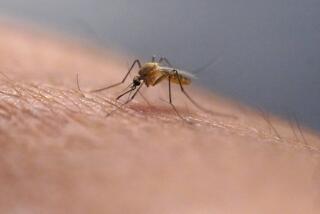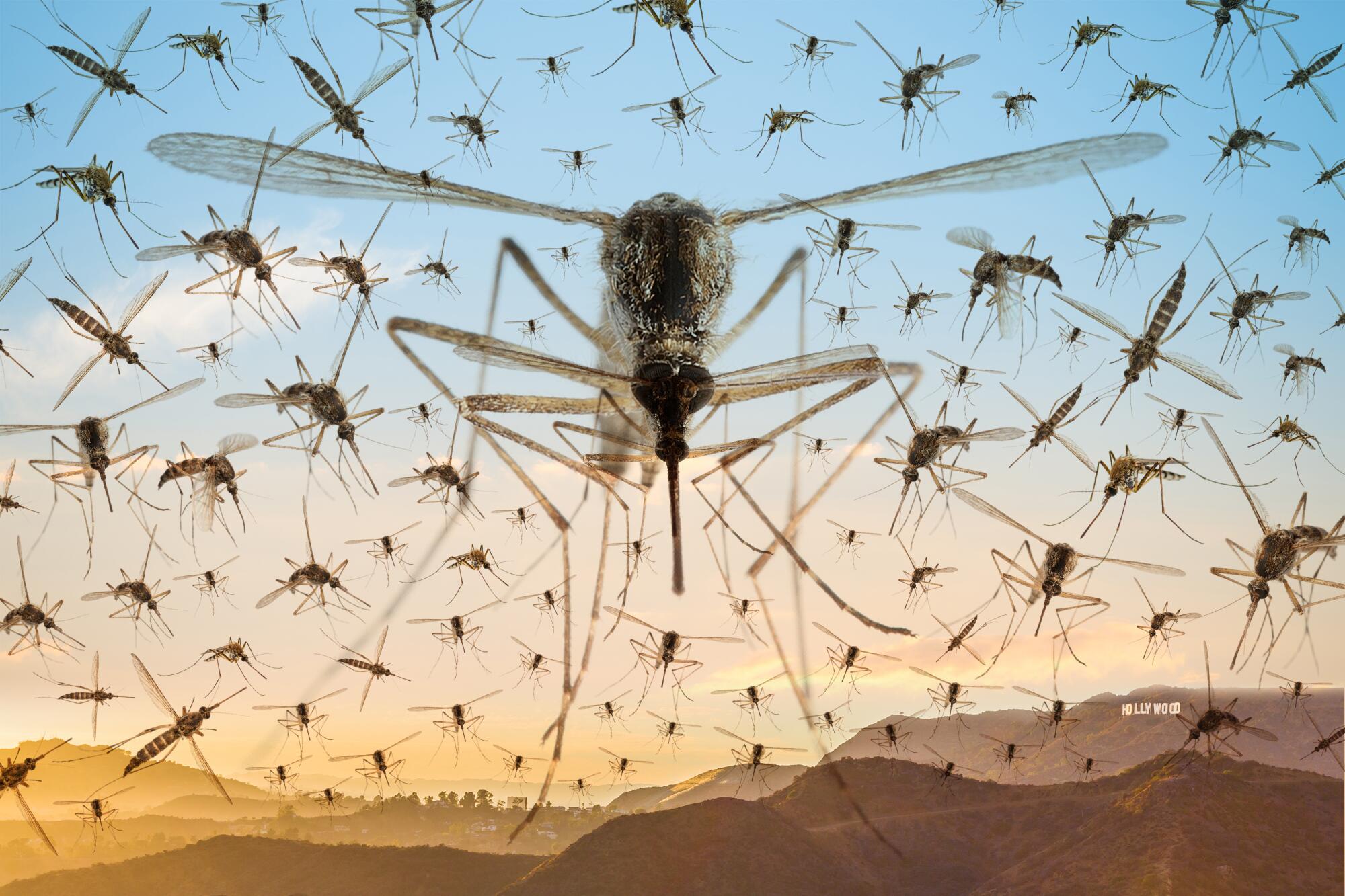
When you think “so L.A.,” Erewhon smoothies, Barbie-pink sunsets and baristas with IMDB credits might come to mind. Now you can add mosquitoes to the list.
No, you’re not imagining it: The tenacious bloodsuckers and other creepy-crawlers are booming in Southern California right now. The culprit? Unprecedented rains, including the recent deluge courtesy of Tropical Storm Hilary. Mosquitoes lay their eggs in water, and this year they had ample real estate to reproduce.
Some experts believe other bugs and animals — including those considered pestiferous, like rats — are thriving from secondary impacts of all that H20, like increased vegetation. That’s why you might see more critters out and about. Or, in the case of mosquitoes, feel their bites after the fact.
Mosquitoes are not a new nuisance in the City of Angels: Los Angeles landed first on pest control company Orkin’s Top 50 Mosquito Cities list this year, a dishonor the city’s held for three years running. Ranks of an invasive mosquito known for fierce ankle biting have steadily risen over the years, according to Susanne Kluh, general manager for the Greater Los Angeles County Vector Control District. Like a typical rising pop icon in L.A., it’s often referred to by its first name: Aedes. And it’s the Aedes — Aedes aegypti in particular — that’s really popping off right now.
But some experts say the unusual weather made the year singular.
April showers bring ... mosquitoes. Here are some pointers to help keep them away from your home. Pro tip: Do not leave pools of standing water on your property.
Even California’s native Culex mosquitoes, typically in decline by this time of year, have surged this month. All was going well on the containment front until Hilary struck in late August, Kluh said.
“With just the first round of trapping after the rain, we’re really seeing numbers go up because there’s just so many little water sources in everybody’s backyard,” Kluh said.
There are five vector control districts that cover L.A. County. The Greater Los Angeles County district, which Kluh manages, is the largest, stretching from San Pedro to Santa Clarita. It covers most of L.A. city except for coastal regions, and doesn’t serve the San Gabriel or Antelope Valleys.
“Our area has about a million parcels, not all residential,” she added, “but you can imagine how many bottle caps, lawn drains, saucers, toolboxes that weren’t put away are now filled with water — and will be breeding mosquitoes.” Aedes mosquitoes can breed in minuscule amounts of water. Even water trapped in the depression of a crinkled chips bag is fair game.
In September, an average of nearly 21 female Aedes mosquitoes were logged per trap-night — an average of mosquitoes counted in traps laid throughout the district. That’s more than triple the five-year average. An average of 46 female Culex mosquitoes were collected this month, double the five-year average.
It’s a similar story in Orange County. For the week of Sept. 11, an average of 28 female Aedes mosquitoes were collected per trap-night, roughly seven times the five-year average for that time frame. Culex mosquitoes averaged nearly 55 per trap-night during that week, a sizable jump from the five-year weekly average of about 34.
Culex make up the majority of the region’s mosquito population, but their season typically peaks earlier. After surging above average in June and July after the torrential spring, their numbers began falling — then Hilary and hot weather arrived, according to vector control experts.
Mosquitoes like it wet, but not cold. When the temperature drops, they tend to dwindle. But relief is becoming more elusive as the Aedes’ season may be expanding.
A lasting dip in mosquito numbers isn’t expected to arrive until December, said Brian Brannon, a spokesperson for the Orange County Mosquito and Vector Control District. Levels tend to be lowest in January and February, he said.
Culex mosquitoes are considered less annoying because they like to bite birds over humans and tend to be satisfied with one slurp of blood — compared to the Aedes’ preference for human blood extracted through multiple strikes. . But Culex are California’s primary spreaders of the deadly West Nile virus, which poses a growing threat in the Golden State this year. Just this month, L.A. County confirmed the first death from the virus this year. The patient was a San Fernando Valley resident, according to the L.A. County Department of Public Health.
A woman tested positive for the West Nile Virus infection, becoming the first human case in Orange County this year, according to health officials.
Aedes mosquitoes can transmit diseases such as chikungunya, dengue and Zika. Though they haven’t been linked to an outbreak in California, it’s a top-of-mind fear for vector control officials.
Mosquitoes are closely tracked because of their ability to disseminate diseases. Most insects, and arachnids for that matter, don’t get that kind of treatment.
Without hard data, it’s hard to definitively say whether other bug populations are seeing the same boom as mosquitoes, said Brian Brown, curator of entomology at the Natural History Museum of L.A. County. That said, Brown and other bug experts largely agree that more rain often translates to more bugs. Many critters chow down on plants, flowers and other things that like a long drink.
“You see bugs thriving because there’s lots of food out there now, because of all the rain,” said Brannon, of the Orange County vector control district. “And then the predators that prey on those bugs are going to start thriving because there’s a lot of that food to eat.”
After the heavy rains, Southern California wildlife experts are already noticing more of certain species, such as the kangaroo rat and red-tailed hawk.
There’s more food for rodents too, which like to nibble on fruit and seeds. Paul Briggs, technical services manager for Orkin’s Pacific division, said they’ve been getting “quite a few” calls for service for rats in Los Angeles lately. He recently visited a facility in the area infested with roof rats.
“Rats right now seem to be on the rise,” he said.
Sometimes what appears to be an increase can be illusory. Sightings of web-building spiders, or Orb-weavers, tick up every year at this time, Brown said. It’s not that their ranks are growing but they’re reaching maturation. They’re suddenly big enough to be noticed and start making large, conspicuous webs.
“You get a mouthful of web at dawn or whatever while you’re walking your dog,” Brown said, “but it’s nothing that’s unusual.”
Feel like you’re seeing spiders everywhere right now? Here’s why.
As for the rain behind the mosquito surge, Kluh sees it as far from usual. Tropical storms typically bring a little bit of rain, but this was substantial. It’s also data that could help communities prepare for the future. Her team is already plotting: “If this is a more common occurrence, how can we better preempt having to start our season basically over in the middle of the summer?”
There are some DIY ways to keep mosquitoes out of your house and off your skin:
- Remove all standing water indoors and outdoors — even tiny sources! Once a week, the Centers for Disease Control and Prevention recommends emptying and scrubbing, turning over, covering or throwing out items that hold water, including tires, buckets, planters, toys, pools, birdbaths, flowerpots or trash containers.
- Install screens over all windows and doors, and repair holes if they develop.
- Use EPA-registered insect repellent.
- Wear loose-fitting long-sleeve shirts and pants. If you have children, make sure their clothing covers their arms and legs as well.
- Put a mosquito net over strollers and baby carriers.
- Wear Permethrin-treated clothing (can be bought or treated at home).
Watch L.A. Times Today at 7 p.m. on Spectrum News 1 on Channel 1 or live stream on the Spectrum News App. Palos Verdes Peninsula and Orange County viewers can watch on Cox Systems on channel 99.
More to Read
Sign up for The Wild
We’ll help you find the best places to hike, bike and run, as well as the perfect silent spots for meditation and yoga.
You may occasionally receive promotional content from the Los Angeles Times.

